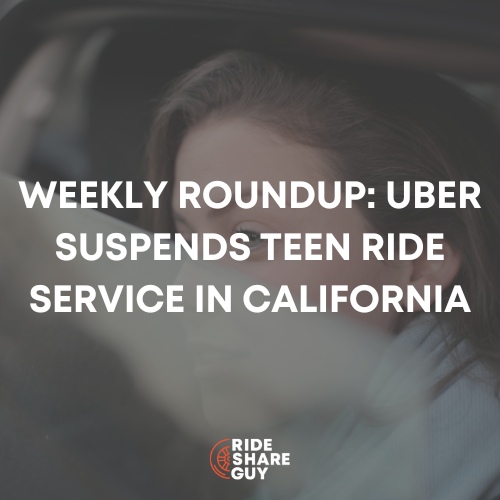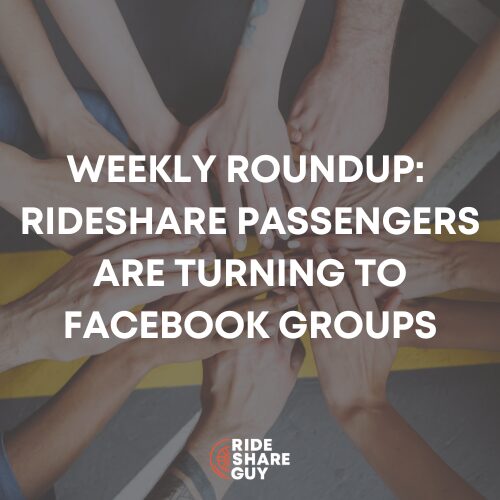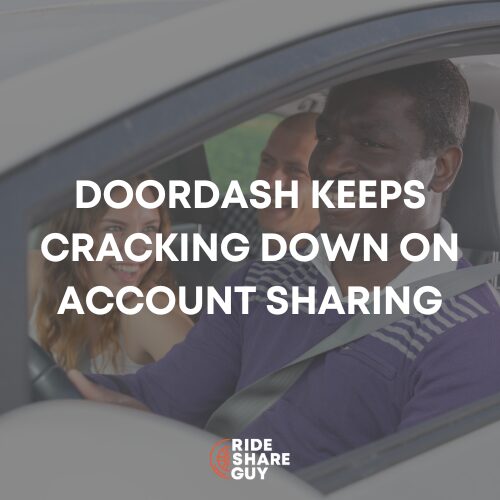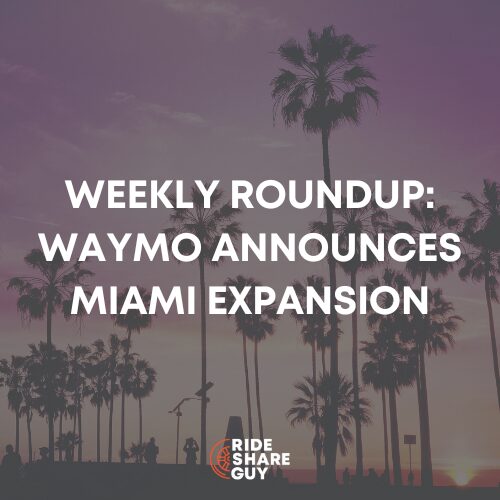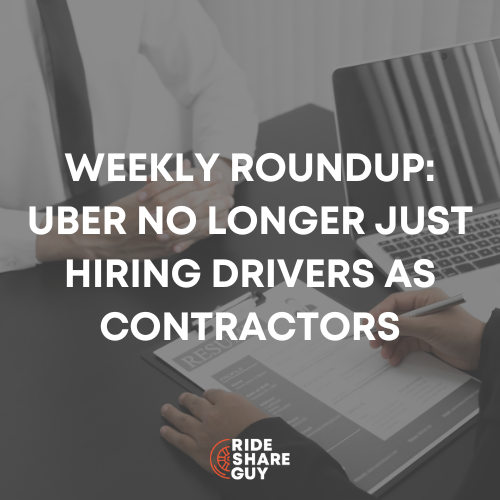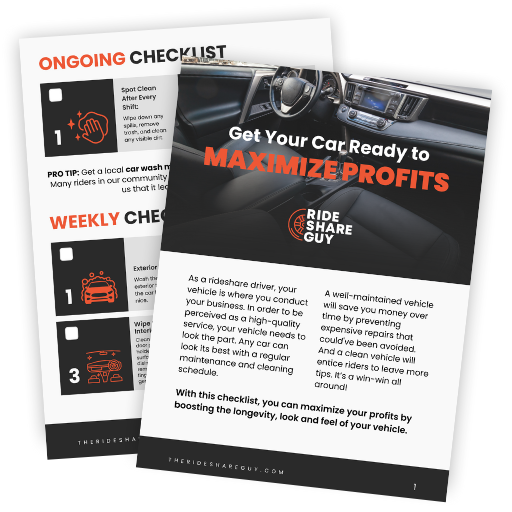Have you heard about the Parrott-Reich Report on rideshare driving and earnings? Most likely you have not, but it’s an important (albeit dense) report on the rideshare industry. Senior RSG contributor John Ince summarizes the report and explains its implications for drivers below.
Outside of academic circles and the chambers of the New York City City Council, very few people have heard of the Parrott-Reich Report. That’s a shame because it’s a seminal document that may one day be seen as a key piece of research that fundamentally shifted course of the labor struggle between drivers and the companies that pay them. The Parrott-Reich Report contains a wealth of information that goes a long way towards debunking some of the prevailing myths about drivers.
It also became the basis of an historic action by the New York City Council recently, when they set a $17.22 base of driver pay in New York City. It’s a powerful document that came at a key juncture – a moment in labor history that was dramatized by multiple suicides of drivers in New York City, tragic events involving largely immigrant families – people who tried to make driving work economically and couldn’t.
All this comes against the backdrop of IPOs that promise to mint thousands of new millionaires – investor and employees owning shares of equity in these companies. The report tries to make some sense of how this all can be happening and what might be done about the stark economic injustices that define this industry.

Historical Perspective
To understand the significance of the Parrott-Reich report, we need a little historical perspective on how Uber and Lyft have crafted the driver narrative, beginning with the companies’ inception a few years ago. To oversimplify greatly, that narrative evolved in 3 distinct stages.
Stage 1 – Establishing an Overly Optimistic Driver Narrative
From its outset, former Uber CEO, Travis Kalanick and others in the industry recognized that they needed to establish a plausible narrative as to how all the different actors in the rideshare sphere would benefit from this new phenomenon. In particular they recognized the need to make drivers or potential drivers see ridesharing an opportunity that had very significant upside earning potential. And in classic deception mode, Uber / Lyft threw out figures like $90,000 annual income in media appearances, at conferences and other settings.
By planting seeds and doing it in a casual way in forums, Kalanick and others believed there was no legal jeopardy, but they were proved wrong when the FTC sued and eventually prevailed. (See FTC Mailing $19M to Uber Drivers for Deceptive Income Promises) Stage 1 of the narrative was planting the planting of seeds – being a driver for Uber and Lyft was it really cool thing – and suddenly you’ve got students, retirees and all kinds of moonlighters joining the brigade.
Stage 2 – Reality Starts to Creep In, Churn Rates Soar, Driver Dissatisfaction Grows – But the Companies Dig In
Kalanick and other spokespeople for the company conveniently left out a crucial piece of information – that drivers we’re responsible for not only providing their own vehicle, but also covering all the expenses that relate to the operation of that vehicle, i.e. maintenance, insurance. Despite the hard cold facts, the optimistic narrative had taken hold, and there were sufficient numbers of drivers who were in fact doing quite well financially that the companies could support the false narrative with real world examples.
Yet there was a human toll that was impossible to quantify, as driving 60 hours a week was indeed exhausting work. Even with reality creeping in, the planted narrative had established the outlines of a recruiting campaign, which over the course of the next decade would result in over 2 million drivers worldwide downloading the app. Most of these drivers started with high expectations. But those expectations were quickly dashed by the reality of the situation.
The churn rate for Uber and Lyft reached astounding levels – 2/3 of all drivers were quitting after just 6 months. Even so, the companies were able to fight back attempts to regulate the industry. How? By pouring millions into what were essentially political campaigns.
Tellingly, one of Uber’s key hires during this phase was David Plouffe, who had been Obama’s campaign manager. Uber and Lyft both recognized that their success was dependent on their ability to keep the regulators at bay – and so they did what was necessary.
Stage 3 – Powerful and Credible Sources Seek To Set the Record Straight
In phase 3, third parties and particularly those in the taxi industry recognized a sophisticated deception had been pulled and that a serious disinformation campaign had taken hold. They marshaled resources to establish a reliable third-party information network that called into question whether or not this rideshare phenomenon was delivering what people said it would, like academic institutions like MIT and City University of New York.
This is where the Parrott-Reich Report entered the picture. It provided the New York City Council with the data and analyses they needed to stand up to the aggressive political tactics of the ridesharing companies – without risking their political futures. With hard cold facts at their disposal, politicians now became emboldened – and challenged the prevailing narrative. So this is the backdrop of the Parrott-Reich Report.
But what was in it that was so compelling? Here are 9 key takeaways from that report.
9 Takeaways of the Parrott-Reich Report
Takeaway 1 – For most drivers, working for Uber does not offer flexibility on when you work
What the Report Said: A common understanding is that app drivers work on a flexible and part- time basis—to supplement their pay from another job by using their otherwise idle cars. That profile does not fit the driver workforce in New York City (and probably not in other dense world-class cities, such as London, Paris, and San Francisco). Paying for a vehicle entirely by driving for hire, as over two-thirds of New York City’s app drivers try to do, is only possible by working full-time. For the 60 percent-plus of all New York City drivers who are full-time drivers—and who provide 80 percent of all rides—work hours are not flexible. Driving is demanding work; drivers’ needs, and safe streets, require some paid time off. Consequently, the standard also includes a modest paid time-off supplement.
My take – This has long been the first line of defense of the ridesharing companies. They tout flexibility as a key factor in recruiting drivers and in defending the independent contractor classification. But this report exposes the fallacy. More than half of drivers do it full time. When you’re driving 60 hours/week, how much flexibility do you have?
Takeaway 2 – The solution to the driver pay issue is more complicated than most people think
What the Report Said: The app business model relies upon very short wait times for passengers requesting rides, which in turn depends on a large supply of available but idle drivers and vehicles. In this model, a pay increase could be counter-productive because it would encourage part-time drivers to work more hours, which would reduce average driver utilization and reduce pay per hour worked.
My take – It’s easy to say just increase fares and everything will be fine. Sure, passengers will pay more, but they should if the service is priced at cost. But wait, if you do that, then part-timers suddenly start coming out of the woodwork – and you’ve got lower utilization rates and lower driver pay per hour. Dang – this thing is complex.
Takeaway 3 – It is possible to better align the interests of the companies with the interests of the drivers – but, again, it’s complicated
What the Report Said: Our early policy design discussions with the TLC thus focused on the need for mechanisms to maintain and increase driver utilization rates. Our subsequent analysis suggested that including the utilization rate in the pay standard formula could substantially benefit the drivers and increase driver pay in a sustainable manner. This mechanism would thus better align the interests of the companies with the interests of the drivers. An incentive to drivers for shared rides would go further to improve efficiency, as it would increase the average passenger time. … Our analysis indicates that a small increase in the number of driver trips per working hour could offset half or more of the costs to the companies of higher driver pay. This discovery suggested a limited need to raise fares to pay the increased costs. Moreover, it would not perceptibly increase passenger wait times. Finally, our analysis of company net revenues and operating costs in New York City indicated considerable latitude for reduced commission rates, which would further limit fare increases.
My take – The key to making the model work is that drivers need to have more time with passengers in their car. Once you can figure out a way to accomplish that, then the whole model improves from both driver and company. The key to increasing driver pay is to increase driver utilization, i.e. more trips/hour.
Takeaway 4 – Most drivers are totally dependent on Uber Lyft and have made a major investment in the vehicle
What the Report Said: Eighty percent acquired their vehicle to enter the industry and would risk losing their investment if they switched to working in another industry.
My take – This figure really surprised me. It was an indication that the business model was based upon a kind of indentured servitude where the cost of the vehicle became the chain around the driver’s neck. Once the driver makes that investment in the vehicle, it becomes very hard to walk away from the gig – even if the gig isn’t what it was cracked up to be.
Takeaway 5 – The rideshare companies actually want to reduce driver trips / hour
What the Report Said: Driver pay is low, despite rapid industry growth and high pricing mark-ups, because companies depend upon having a large ready pool of available drivers. This business model reduces driver trips per hour and therefore driver pay per hour.
My take – This is where the report really takes the companies to task.
Takeaway 6 – Uber / Lyft are amazing job creation vehicles
What the Report Said: The industry provides more jobs than many prominent industries, including commercial banking, hotels, and publishing. Uber alone would be the largest for-profit private employer in New York City—if Uber drivers were classified as employees rather than independent contractors.
My take – Say what you will about Uber and Lyft – but they are amazing in the employment opportunities they have created in just over a decade.
Takeaway 7 – The driver profile has evolved considerably since the inception of the industry
What the Report Said: Driving for the app-based companies has evolved considerably since the creation of the industry in 2010. In its early years, the app-based industry recruited and appealed to part- time drivers who valued flexibility in their work hours and who could take advantage of their mostly idle cars to generate additional income. Many of these part-timers had other jobs or were students or worked at home. Over time, this driver profile has changed substantially.
In New York City today, as we show in this report, a majority of the app-based drivers are full-time workers who undertook risky capital investments in the vehicles they acquired for driving passengers. These drivers, many of whom cannot obtain better- paying job options elsewhere in the New York economy, face difficult economic circumstances. Their low pay has persisted despite the rapid growth of the industry, the major benefits it has provided to consumers, and the high returns it has generated for the companies and their external investors. … Ninety percent of New York City’s app-based drivers are immigrants, and only one out of every six has a four-year college degree. Driving is their only job for two- thirds of the drivers.
My take – This is an astounding statistic. Throw out the window the idea that NYC/urban drivers today are happy retirees, or moonlighting college students. Driving is a grueling job for these people – a job where they have no other choice if they’re going to put food on the table for their families.
Takeaway 8 – It is possible to increase driver pay, without destroying the economics of the industry or forcing major price increases
What the Report Said: The low pay of the drivers has been highly publicized (The New York Times editorial May 7, 2018). FHV drivers and their supporters articulated their concerns loudly and clearly at a New York City Taxi and Limousine Commission (TLC) hearing in April of 2017.1 In response, the TLC proposes to establish a pay standard for drivers at the largest FHV companies—those dispatching more than 10,000 trips per day. The goal of the policy is to raise driver earnings to a level ($17.22 per hour) that is equivalent to $15 an hour, with allowance for the payroll taxes paid by the self-employed and a paid time-off supplement.
My take – This is the boldest step yet taken on behalf if drivers. Kudos to New York City for taking the lead in helping to bring some economic justice to this industry.
Takeaway 9 – The economics of the industry could work, if the companies really wanted to pay the drivers what they’re worth.
What the Report Said: The proposed policy would increase driver net earnings (after expenses) by 22.5 percent, or an average of $6,345 per year among the 85 percent of drivers who would get increases. At the same time, company commissions in the city generate very large mark-ups over local operating costs The policy could be fully paid for by combining an increase of 2.4 minutes in driver trips with passengers per working hour with reductions in company commissions. Fare increases would then be small (five percent or less) and average wait times for passengers would increase by about 12 to 15 seconds. The policy would reward drivers for pooled rides, which would increase as a share of all rides. The policy would substantially reduce growth in the number of new drivers and vehicles and provide some indirect benefits for medallion drivers.
My take – It’s this kind of quantification that empowered the New York City Council to step up and meet the companies on their own terms. It’s a good lesson for other cities – come armed with the kind of statistics and analyses that Uber and Lyft brandish like weapons in their ongoing battles.
Readers, had you heard of the Parrott-Reich Report before now? What are your thoughts on the Report?
-John @ RSG
[yasr_visitor_votes size=”medium”]
